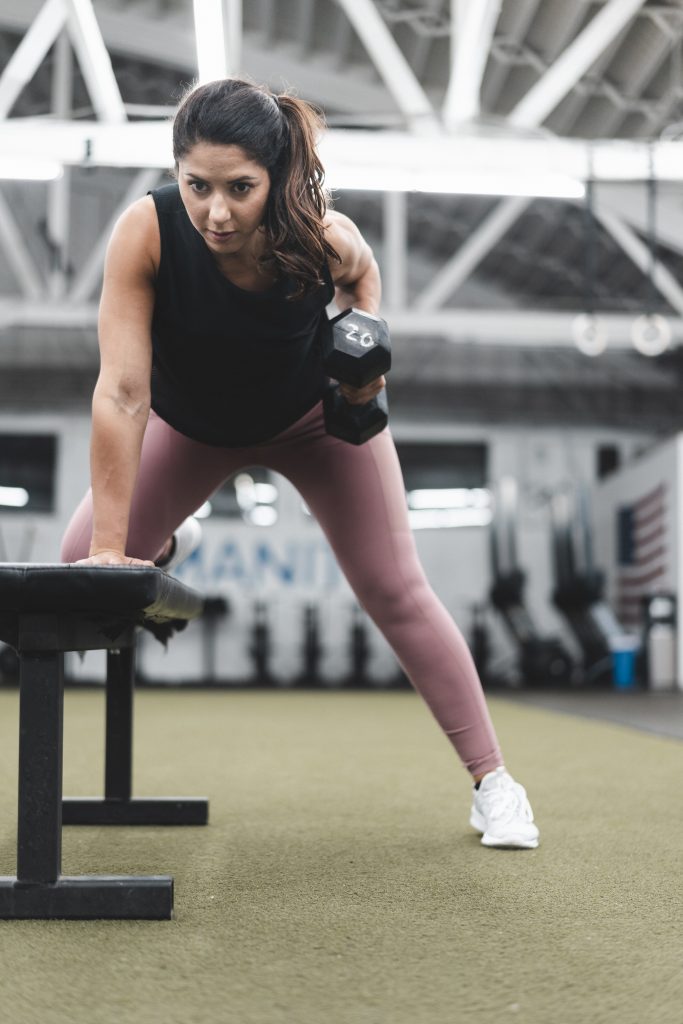How long should you rest?
If you train with me in-person or through BarbellSTRONG coaching (BSC), my 4 month online strength & hypertrophy program, you’ll always know exactly how long to rest between sets.
Rest periods are the most underrated training variable yet an easy one to track. Most people overestimate the time they’ve spent resting between sets and end up doing too much for the goal they’re trying to achieve, or not resting long enough between sets.
The most optimal rest period for muscle growth
To build muscle, you need three things:
- Mechanical tension
- Muscle damage
- Metabolic stress
Mechanical tension or stress refers to the time your muscles spend under load and in a range of motions. It’s how you load the musculoskeletal system – your tendons, muscles, and bones – that creates mechanical stress.
Muscle damage is what happens when you lift. Little micro tears in the muscle fibers that are then repaired and restored. This is also why you feel sore after a workout.
Metabolic stress is a physiological process. The usage and depletion of your phosphagen and glycolytic energy systems. Your body can use more than one energy system at a time but usually there’s one major doing the work.
With me so far?
Good. Let’s keep going…

When it comes to choosing the best rest periods for your workouts, consider the goal. Are you going for a one-rep max (1RM)? Are you chasing the ‘pump’? Is the goal to build muscle (a la bodybuilding style?)
The outcome you desire dictates the rest periods, and it may very well change throughout the workout.
Desired outcome: Build muscle and create shape
Rest periods between 30-90 seconds is the sweet spot. The goal here is to deplete your glycogen stores as much as possible during the working sets and give you enough recovery time to hit the next set. Hypertrophy blocks inside the BarbellSTRONG coaching programs are usually 60-90 seconds.
Desired outcome: Maximal strength or power
Rest periods in the 2-5 minute range is ideal. This is the time needed to allow your phosphagen system to recover – maybe not fully but just enough. Within this window, your body can re-synthesize ATP, which is the energy (or juice) your muscles need to contract.
In powerlifting, I could spend an entire 35 minutes on a single lift because the rest periods were 3-5 minutes long between sets. In weightlifting, anything less than 3 minutes would knock the wind out of me in the next set. Not resting enough meant I couldn’t make the next lift. This is why rest periods are so crucial.
Desired outcome: Improve muscular endurance
Rest periods of 30-90 seconds is the sweet spot according to National Academy of Sports Medicine. Assuming your working set is 2-3 minutes long with weights or bodyweight, a 30-45 second rest period offers ample time to recover without feeling depleted. However, this can depend on the person. At this level, the body is using a combination of carbohydrates, fats, and protein sources for energy. In BarbellSTRONG coaching, these shorter rest periods are given after a circuit to keep the heart rate up and give ladies plenty of time to recover and work again.
Are you timing your rest periods?
When clients hit a plateau and or feel that their lifts aren’t improving, I often look at two factors:
- Rest periods
- Load
More often than not, clients are either not lifting enough weight to create mechanical tension or muscle damage(and therefore to stimulate muscle growth), or they’re simply not paying attention to rest periods.
Put down your phone. Stop talking to your pals. Get out a stop watch and monitor your rest periods for one workout. You’ll find your workout will be more challenging, go a lot smoother, and that you’re underestimating the value of rest periods.
Enrollment for BSC 2021 kicks off in January! Sign up here to get on the waitlist and be the first to know when doors open, deals, and promos!

